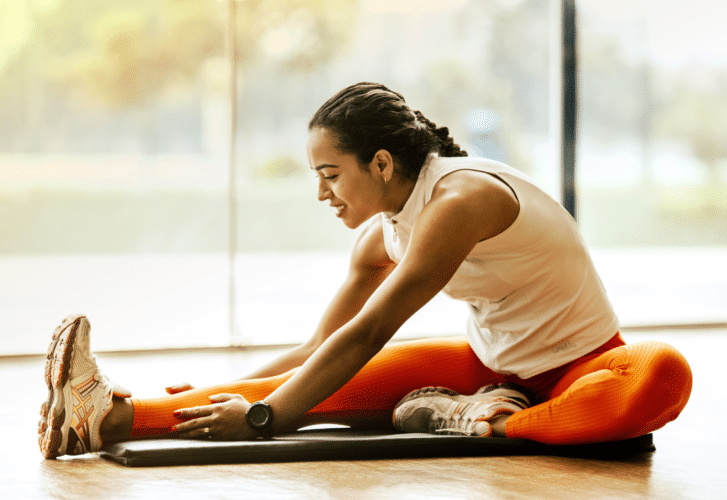When most people think about fitness, they picture toned abs, heavy weights, or running marathons. But fitness isn’t just about looking good—it’s about feeling strong, moving well, and being able to do everyday tasks with ease. That’s where functional fitness comes in.
Functional fitness is a training style that focuses on building strength, mobility, balance, and endurance for real-life activities—not just gym performance. Whether you’re lifting groceries, playing with your kids, or getting up from the floor, functional fitness helps your body move the way it was designed to.
What Is Functional Fitness?
Functional fitness is about training movements, not just muscles. Instead of isolating one muscle group at a time (like doing bicep curls), functional workouts involve multi-joint, multi-muscle exercises that mimic real-world movements. Think squatting, pushing, pulling, twisting, lunging, and carrying.
These movements:
- Improve coordination and balance
- Strengthen your core and stabilizer muscles
- Increase joint mobility and flexibility
- Reduce your risk of injury
- Make daily tasks easier and safer
It’s fitness that’s practical, not just aesthetic.
Why Functional Fitness Matters
As we age or sit for long hours, our natural movement patterns tend to break down. We lose flexibility, strength, and balance, leading to stiffness, pain, and even falls. Functional training helps counteract this by reinforcing the movements we use every day.
It’s ideal for:
- Older adults looking to stay independent
- Athletes improving sport performance
- Busy professionals who need efficient, full-body workouts
- Beginners focused on foundational strength
Instead of training for a six-pack, you’re training for life.
Key Principles of Functional Fitness
1. Movement Over Muscle
Functional fitness emphasizes natural movements—like squats, lunges, and rotations—rather than isolating single muscles.
2. Core-Centric Training
The core is your center of strength and balance. Every functional move involves stabilizing and strengthening your midsection.
3. Multi-Planar Motion
Real life doesn’t happen in one direction. Functional workouts include movements in all planes—forward/backward, side-to-side, and rotational.
4. Balance and Stability
Exercises often involve one-leg movements, unstable surfaces, or tools like kettlebells and resistance bands to challenge your balance and coordination.
Top Functional Exercises to Try
You don’t need fancy equipment to start. These are beginner-friendly, effective functional exercises:
1. Squats
Mimics sitting and standing. Builds leg, glute, and core strength.
2. Lunges
Improves balance, hip mobility, and unilateral leg strength.
3. Push-Ups
Works your chest, arms, core, and stabilizers.
4. Planks
Strengthens the entire core, promoting posture and back health.
5. Deadlifts (with or without weights)
Trains the back, glutes, hamstrings—ideal for lifting objects safely.
6. Farmer’s Carries
Hold weights in each hand and walk. Great for grip strength, posture, and total-body stability.
7. Step-Ups
Trains leg strength and mimics climbing stairs or curbs.
8. Medicine Ball Slams or Rotational Throws
Build rotational power—key for sports and daily twisting movements.
Sample Functional Fitness Routine (Bodyweight – No Equipment)
Do each exercise for 45 seconds, rest for 15. Complete 2–3 rounds.
- Bodyweight Squats
- Forward Lunges (alternating legs)
- Push-Ups (or modified on knees)
- Plank Hold
- Glute Bridges
- Bird-Dog (core + balance)
- Side-to-Side Steps or Skaters
- Wall Sit (hold for time)
This type of circuit targets your whole body, improves endurance, and reinforces daily movement mechanics.
How to Add Functional Fitness to Your Life
- Start small: 15–20 minutes a few times a week is enough to make progress.
- Focus on form: Prioritize quality of movement over quantity or speed.
- Use everyday items: Water bottles as weights, a chair for step-ups, or a towel for stretches.
- Incorporate movement breaks: Get up and squat, lunge, or stretch throughout your day.
- Progress gradually: Add weights, resistance bands, or new variations as you improve.
Who Should Practice Functional Fitness?
Everyone. Whether you’re a stay-at-home parent, office worker, athlete, or retiree, functional training offers something for you. It’s safe, adaptable, and incredibly rewarding.
Functional Fitness vs. Traditional Strength Training
| Feature | Functional Fitness | Traditional Strength Training |
|---|---|---|
| Focus | Movement patterns | Muscle isolation |
| Goal | Real-life mobility & strength | Muscle size or max strength |
| Equipment | Bodyweight, kettlebells, resistance bands | Machines, barbells, dumbbells |
| Benefits | Everyday performance, injury prevention | Aesthetic goals, strength gains |
Both training types can be valuable—but functional fitness is especially useful for longevity and injury prevention.
The Bottom Line: Train for Life
Functional fitness isn’t about being the strongest or the fastest—it’s about being capable. It’s about walking up stairs without pain, bending to pick up your child safely, or keeping your balance on uneven ground. It’s fitness that supports your real-life goals.
By incorporating functional movements into your routine, you build a body that’s not only fit—but resilient, adaptable, and ready for whatever life throws your way.






